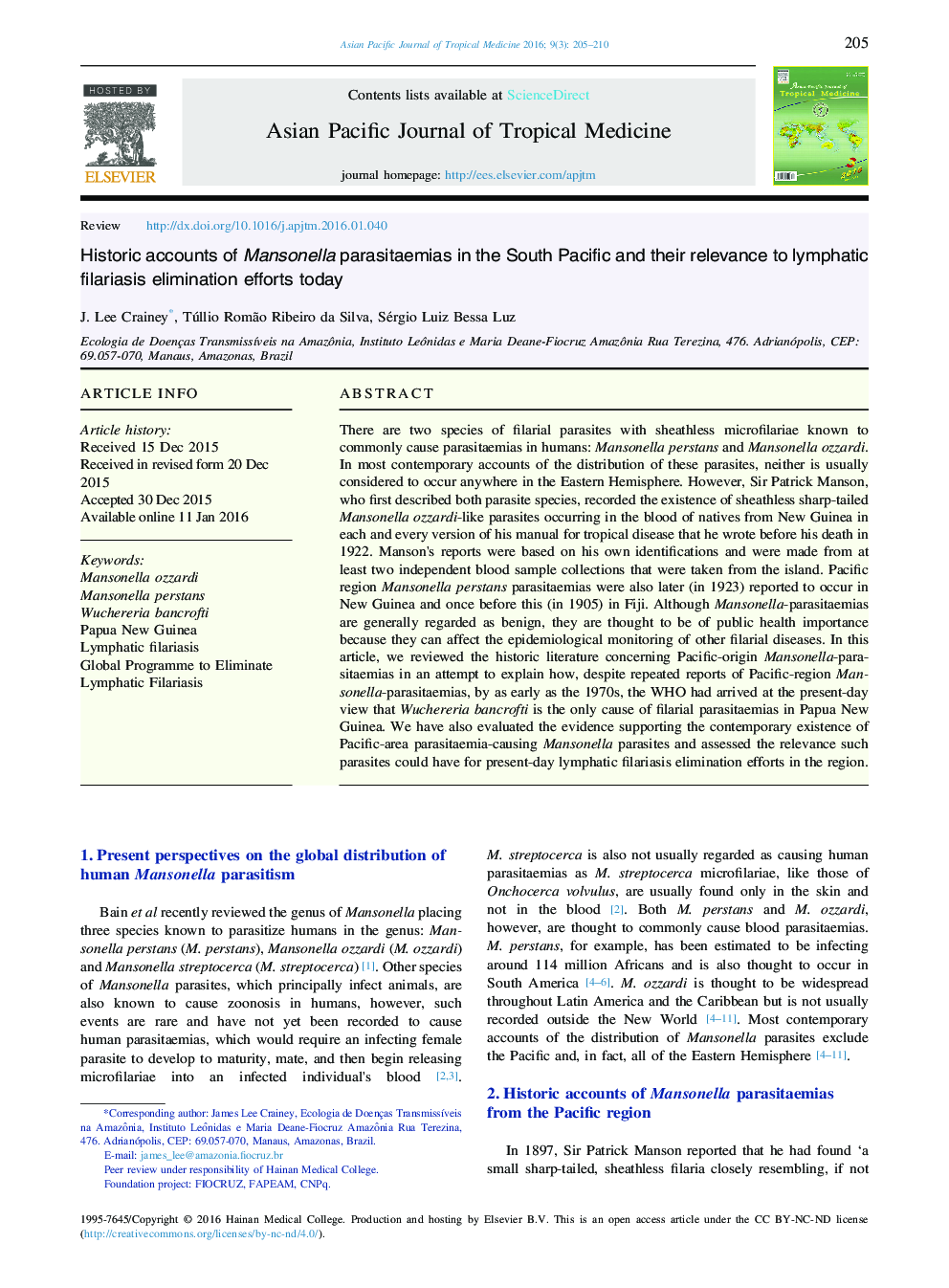| کد مقاله | کد نشریه | سال انتشار | مقاله انگلیسی | نسخه تمام متن |
|---|---|---|---|---|
| 3455283 | 1596006 | 2016 | 6 صفحه PDF | دانلود رایگان |
There are two species of filarial parasites with sheathless microfilariae known to commonly cause parasitaemias in humans: Mansonella perstans and Mansonella ozzardi. In most contemporary accounts of the distribution of these parasites, neither is usually considered to occur anywhere in the Eastern Hemisphere. However, Sir Patrick Manson, who first described both parasite species, recorded the existence of sheathless sharp-tailed Mansonella ozzardi-like parasites occurring in the blood of natives from New Guinea in each and every version of his manual for tropical disease that he wrote before his death in 1922. Manson's reports were based on his own identifications and were made from at least two independent blood sample collections that were taken from the island. Pacific region Mansonella perstans parasitaemias were also later (in 1923) reported to occur in New Guinea and once before this (in 1905) in Fiji. Although Mansonella-parasitaemias are generally regarded as benign, they are thought to be of public health importance because they can affect the epidemiological monitoring of other filarial diseases. In this article, we reviewed the historic literature concerning Pacific-origin Mansonella-parasitaemias in an attempt to explain how, despite repeated reports of Pacific-region Mansonella-parasitaemias, by as early as the 1970s, the WHO had arrived at the present-day view that Wuchereria bancrofti is the only cause of filarial parasitaemias in Papua New Guinea. We have also evaluated the evidence supporting the contemporary existence of Pacific-area parasitaemia-causing Mansonella parasites and assessed the relevance such parasites could have for present-day lymphatic filariasis elimination efforts in the region.
Journal: Asian Pacific Journal of Tropical Medicine - Volume 9, Issue 3, March 2016, Pages 205–210
